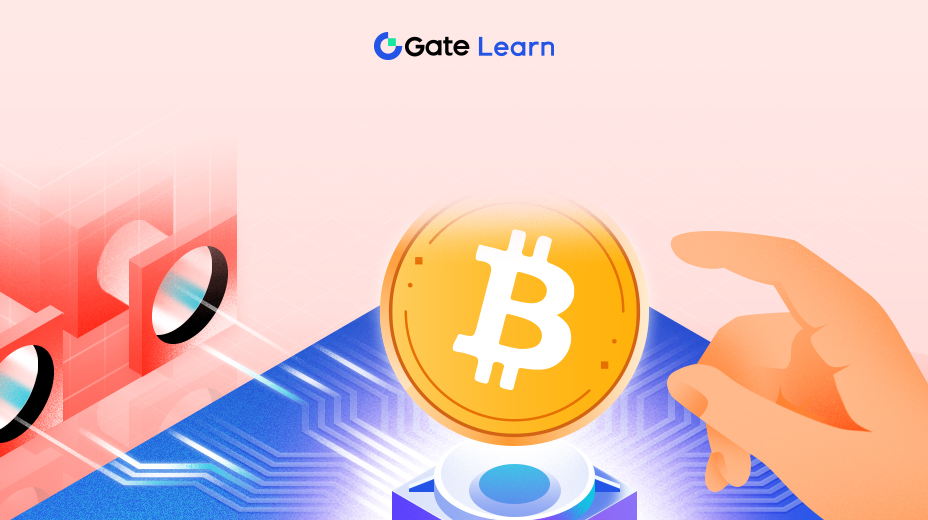Profundización técnica en PulseChain
Este módulo proporciona una visión general en profundidad de PulseChain, ilustrando su enfoque innovador como un hard fork de Ethereum destinado a resolver problemas críticos como la escalabilidad, las tarifas de transacción y la eficiencia energética. Destaca la adopción de PulseChain de un mecanismo de consenso de Prueba de Participación (PoS), que no solo reduce el consumo de energía, sino que también mejora la seguridad de la red y la gobernanza.

Fuente: Sitio web de PulseWallet
PulseChain utiliza un mecanismo de consenso de Prueba de Participación (PoS), que es un cambio significativo respecto a los sistemas tradicionales de Prueba de Trabajo (PoW) utilizados por otras blockchains como Bitcoin. Este cambio tiene como objetivo abordar los problemas de alto consumo de energía asociados con los sistemas PoW, haciendo que PulseChain sea más eficiente en energía y respetuoso con el medio ambiente.
Mecanismo de consenso
PulseChain opera en un modelo de PoS donde los validadores son elegidos en función de la cantidad de la moneda nativa de la red, PLS, que poseen y están dispuestos a apostar. Este proceso de apuesta es crucial para la seguridad de la red, ya que incentiva a los validadores a actuar honesta y mantener la integridad de la red.
Características de seguridad
El mecanismo PoS reduce inherentemente el riesgo de un ataque del 51%, que es más frecuente en los sistemas PoW. En PoS, para comprometer la red, un atacante necesitaría poseer una parte significativa de los tokens apostados, lo que generalmente tiene un costo prohibitivo. PulseChain incorpora medidas de seguridad adicionales, como la rotación de validadores y las políticas de reducción de recompensas, para disuadir y penalizar el comportamiento deshonesto entre los validadores. Esto no solo ayuda a mantener una red justa y segura, sino que también garantiza que el poder no se concentre en unas pocas partes interesadas.
Impacto ambiental
Al eliminar la necesidad de operaciones mineras intensivas en energía, PulseChain reduce significativamente su huella de carbono. Esto lo convierte en una opción más sostenible en el espacio blockchain, alineándose con el creciente énfasis global en la reducción del uso de energía y la promoción de la sostenibilidad ambiental.
Gobernanza
El modelo de gobernanza de PulseChain permite a los titulares de tokens PLS participar en procesos importantes de toma de decisiones con respecto a actualizaciones de red y cambios de protocolo. Este nivel de participación tiene como objetivo mantener la red adaptable y alineada con las necesidades y expectativas de la comunidad.
Contratos inteligentes y lógica de bifurcación
PulseChain está diseñado fundamentalmente para ser una cadena de bloques más eficiente y fácil de usar en comparación con Ethereum, especialmente en lo que respecta al manejo de contratos inteligentes. Dado que es un fork de Ethereum, PulseChain soporta inherentemente todos los contratos inteligentes existentes en Ethereum. Esta compatibilidad es una ventaja significativa, ya que permite a los desarrolladores migrar sus aplicaciones a PulseChain sin necesidad de reescribir o modificar sustancialmente su código.
Al reflejar las capacidades de Ethereum, PulseChain permite la ejecución sin problemas de contratos inteligentes existentes en Ethereum. Esta compatibilidad se extiende a todas las herramientas e idiomas utilizados en el ecosistema de Ethereum, como Solidity y la Máquina Virtual Ethereum (EVM). Esto significa que los desarrolladores pueden usar el mismo código base y las herramientas de desarrollo con las que ya están familiarizados, reduciendo la barrera de entrada y simplificando la transición de Ethereum a PulseChain.
PulseChain mejora el entorno de ejecución de Ethereum al ofrecer tiempos de transacción más rápidos y tarifas de gas más bajas. Estas mejoras son beneficiosas para la ejecución de contratos inteligentes, haciendo que las operaciones sean más baratas y eficientes, especialmente para aplicaciones DeFi y otras actividades intensivas en transacciones.
Lógica de bifurcación
La forma específica en la que PulseChain se bifurcó de Ethereum también es crucial para comprender sus implicaciones más amplias para contratos inteligentes y el ecosistema blockchain.
Bifurcación de estado completa
PulseChain no solo bifurcó el código de Ethereum; también ejecutó una copia completa del estado de la cadena de bloques de Ethereum en el momento de la bifurcación. Esto significa que no solo el código, sino también todo el libro mayor de saldos de cuentas, contratos inteligentes y otros activos digitales se duplicaron en PulseChain. Este enfoque integral ayuda a preservar el estado y la historia de las aplicaciones, asegurando que continúen funcionando sin problemas después de la bifurcación.
Esta bifurcación de estado completo tiene implicaciones significativas. Para los usuarios y desarrolladores, significa que todo, desde tokens ERC-20 hasta complejos contratos inteligentes que se ejecutaban en Ethereum en el momento de la bifurcación, ahora existe en PulseChain. Esta doble existencia reduce los riesgos asociados con la migración y permite a los usuarios interactuar con ambas cadenas de bloques utilizando activos similares o idénticos. Además, la bifurcación también introduce un escenario en el que el descubrimiento de valor de los activos puede ocurrir de forma independiente en ambas cadenas de bloques, lo que podría conducir a variaciones en la valoración y la utilidad de los activos entre Ethereum y PulseChain.
Sincronización continua con Ethereum
Si bien el tenedor inicial copió el estado en una altura de bloque específica, las interacciones y transacciones continuas en Ethereum no se sincronizan automáticamente con PulseChain. Esto significa que cualquier transacción o interacción de contrato inteligente que ocurra en Ethereum después del tenedor no se refleja en PulseChain a menos que se implemente específicamente a través de funcionalidades o puentes entre cadenas.
En general, el manejo de contratos inteligentes de PulseChain y su lógica de bifurcación presentan una combinación única de continuidad e innovación. Al aprovechar las fortalezas del ecosistema existente de Ethereum y abordar sus problemas de escalabilidad y costos, PulseChain tiene como objetivo ofrecer una alternativa más eficiente para las aplicaciones de blockchain. Este enfoque no solo mejora la funcionalidad y viabilidad del uso de contratos inteligentes, sino que también amplía el alcance de su aplicación a través de un rendimiento mejorado y costos operativos reducidos.
Validadores de red
En la red de PulseChain, los validadores juegan un papel crítico en mantener la integridad, seguridad y rendimiento de la cadena de bloques. Sus responsabilidades principales incluyen:
Validación de transacción
Los validadores son responsables de verificar y validar transacciones para asegurarse de que cumplan con las reglas de la red. Este proceso implica verificar las firmas de las transacciones, asegurarse de que estén correctamente formadas y confirmar que los remitentes tienen saldos suficientes.
Producción de bloques
Los validadores participan en el proceso de consenso para proponer y votar el siguiente bloque. Al hacerlo, ayudan a la red a lograr el consenso y agregar nuevos bloques a la cadena de bloques.
Seguridad de la red
Al apostar tokens PLS, los validadores se comprometen a actuar con honestidad. Si intentan hacer trampa o realizar doble gasto, parte de su apuesta puede ser reducida como penalización. Este mecanismo de apuesta y reducción es crucial para disuadir actividades maliciosas y asegurar la red.
Gobernanza
Los validadores también juegan un papel en la gobernanza de la red PulseChain. Pueden votar sobre los cambios propuestos en el protocolo, incluidas las actualizaciones y ajustes de parámetros, reflejando su interés en la salud y el crecimiento de la red.
Convertirse en un validador
Convertirse en un validador en PulseChain implica varios pasos y requisitos, principalmente centrados en el staking de tokens y la configuración técnica:
Requisito mínimo de participación
Para convertirse en un validador, un usuario debe apostar una cantidad significativa de tokens PLS. La cantidad exacta puede variar según las decisiones de gobernanza de la red, pero está diseñada para ser lo suficientemente sustancial como para disuadir el comportamiento deshonesto.
Ejecutando un nodo
Los validadores deben ejecutar un nodo completo en la red de PulseChain. Esto requiere mantener hardware capaz de procesar transacciones y bloques de manera eficiente y continua. El nodo debe permanecer en línea y ser eficiente para participar de manera efectiva en el consenso y la producción de bloques.
Competencia técnica
Los validadores necesitan un cierto nivel de experiencia técnica para gestionar y asegurar su nodo, manejar actualizaciones y garantizar un servicio ininterrumpido. Esta experiencia es crucial para mantener la solidez y fiabilidad de la red.
Confianza de la comunidad
Aunque no sea un requisito formal, ganarse la confianza de la comunidad puede ser esencial, especialmente en una red donde la influencia y responsabilidades del validador son significativas. La confianza puede influir en la cantidad de tokens de participación delegados a un validador por otros tenedores de tokens.
Importancia de los validadores
Los validadores son esenciales para el funcionamiento y la seguridad de la red PulseChain. Ayudan a asegurar que la cadena de bloques permanezca descentralizada, segura y libre de manipulación. Sin validadores, la red sería susceptible a varios tipos de ataques, incluyendo el doble gasto y bifurcaciones de red. Además, los validadores apoyan el desarrollo continuo y la mejora de la cadena de bloques a través de su participación en actividades de gobernanza y comunidad.
Los validadores son fundamentales para la función de la red PulseChain, proporcionando los recursos computacionales necesarios para procesar transacciones y crear nuevos bloques, al mismo tiempo que garantizan la integridad de la red a través de la participación en staking y gobernanza. Su papel es vital para la confianza y fiabilidad de la cadena de bloques, influyendo en todo, desde la velocidad de las transacciones hasta las actualizaciones de la red.





